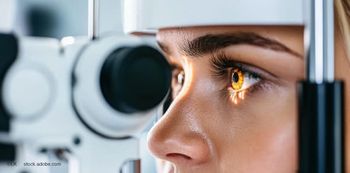
Q&A: Redefining cataract education for patients with virtual reality
Immersive VR simulation helps patients better understand intraocular lens options.
Helping patients with cataract choose the appropriate intraocular lens (IOL) has long been one of the most communication-intensive parts of surgery. Even with advances in optics and counseling tools, many patients still struggle to visualize what their vision will look like after implantation.1,2 To bridge this gap, a newly launched virtual reality 3D IOL simulation platform (Immersive IOL Simulator; VirtuaLens) allows patients to experience how monofocal, multifocal, and premium lenses perform in real-world settings.1,2
RELATED: VirtuaLens introduces immersive VR IOL simulation platform; partners with Virtual Vision Health
In this interview with the Eye Care Network, John Branch, MD, chief executive officer and co-founder of VirtuaLens, discusses how virtual reality is reshaping cataract education. Branch explains how 3D immersive technology enhances patient understanding of lens options, opens new possibilities for education and accessibility across medicine, and highlights the importance of collaboration and humility in driving innovation.
Note: Transcript has been edited for clarity and length.
What gap in cataract care or patient education did you see that led to the development of this simulator?
Branch: In all the years we’ve been doing cataract surgery, we've struggled to educate patients on what to expect with different lenses—to help them understand the qualities, range of vision, strengths, and limitations of each option. We've been limited to verbally explaining or showing in 2D pictures of what they might expect. We're trying to educate patients on lenses they will use in a 3D world using 2D images. Some of the recent virtual reality platforms have allowed us to use 3D immersive environments to truly show patients what they can expect, both in depth of focus and quality of vision. We can take them from day to night, from office to driving a car—show them range of vision, halos, starbursts, and glare. Now we can show them what kind of vision they will have and show them in their everyday environments.
Looking ahead, how might technologies like this evolve or expand beyond cataract surgery to other areas of ophthalmology or health care?
Branch: Using virtual reality in 3D simulators could extend to several fields of medicine— whether it's ophthalmology or another specialty that has a visual expectation component, such as plastic surgery, to help simulate augmentations or procedures that they can test drive prior to deciding on moving forward with an elective procedure. The only limit on applications is our imaginations and how they can apply to the field in which we practice.
VR opens the door to more than just diagnostics or cataract education. VR tools like ours show how portable, accessible VR can give doctors new ways to educate, screen, and manage patients while also extending care to people across different economic backgrounds. By reducing the need for bulky equipment and creating immersive, easy-to-understand experiences, VR can make health care more inclusive and scalable—not only in eye care but across broader areas of medicine.
What do you see as the biggest challenges innovators face when bringing new technologies into the clinical setting?
Branch: We as clinicians understand the problems very well. The gap we face is figuring out how to create solutions to those problems by partnering with other people or industries that have a unique skill set that could help in developing the solution to that problem. When we try to go at it alone, we are limited by our own unique skill set. When we learn how to partner with other people, we can leverage other people's expertise in finding the best solution. Pride and individualism are 2 hurdles to innovation.
From your perspective, what qualities or mindsets are most important for physicians who want to step into an innovator’s role?
Branch: I think having a mindset of understanding that finding solutions to long standing or complex problems takes time and a lot of focused thought. Understand that there will be several iterations until you find a truly good solution. Being OK with making mistakes and being OK with understanding the limits of your own personal capabilities in finding that solution is important.
Looking back on your own journey, what lessons have you learned that might be valuable for others hoping to translate an idea into a practical solution?
Branch: What’s been helpful to us in finding a practical solution is being pragmatic in approaching the problem—defining thoroughly the pain points experienced in the current way things are practiced. In this approach, we evaluated the problem from the clinical setting. For me, I understood the problem because I dealt with it day in and day out in the clinic. The idea for the solution was birthed out of dealing with that problem directly. Finding a solution and developing a product went from the clinical setting backward into the world of technology to find a way to get there. We didn't find the technology and try to push it back out into a clinical utilization. Doing it this way keeps you laser focused and can help limit the distractions in refining the product to the end user. Keeping the end user in mind at all times will guard it from veering into a less-focused solution.
John Branch, MD, is co-founder of VirtuaLens.
REFERENCES
VirtuaLens launches immersive virtual reality IOL simulator, transforming cataract patient education and lens selection. News release. September 3, 2025. Accessed September 9, 2025.
https://virtualens.health/virtualens-launches-immersive-virtual-reality-iol-simulator-transforming-cataract-patient-education-and-lens-selection/ Virtual Vision Health and VirtuaLens forge strategic partnership to expand access to diagnostic eye care and patient education tools. News release. September 9, 2025. Accessed September 9, 2025.
https://virtualens.health/strategic-partnership-with-virtual-vision-health/
Newsletter
Don’t miss out—get Ophthalmology Times updates on the latest clinical advancements and expert interviews, straight to your inbox.













































.png)


